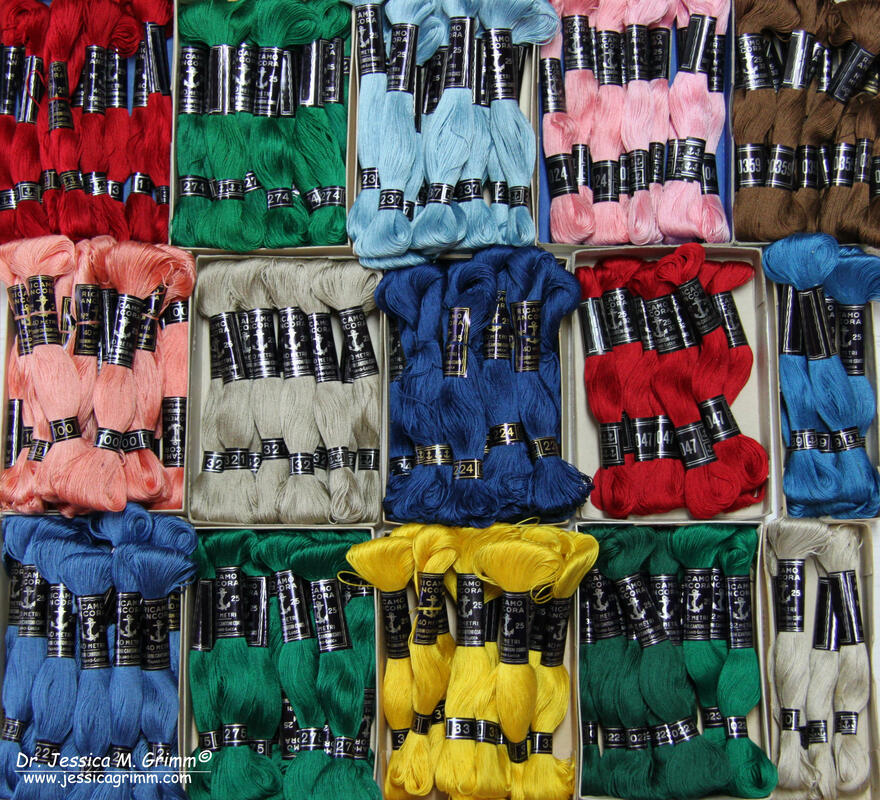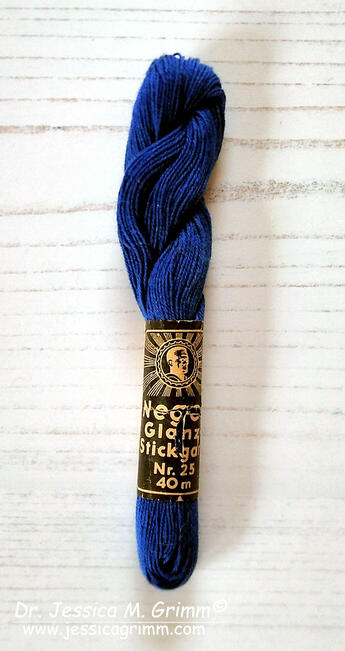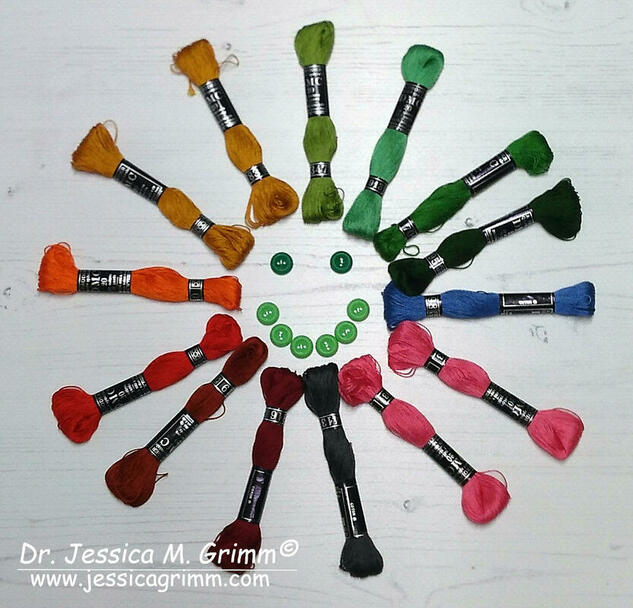|
Inclusion in the craft world, mostly meaning also using people of colour or with a disability in promotion, has been a topic in the English-speaking world for some time now. Contrary, I am unaware of similar discussion in either the Netherlands or Germany. Nevertheless, I really enjoyed looking at the pictures Mary Corbet published in a recent blog post regarding an embroidery book for kids. Amongst white kids, there were kids of colour proudly showing their projects. And even the diagrams showed fingers of colour. How cool is that?! But when I prepared my large stash of vintage embroidery yarn for sale, I found a stark reminder of how different things were not that long ago ... Amongst the far too many vintage coton a broder (Vierfachgarn) skeins in my ridiculously large stash, was one skein that stood out like a sore thumb: Neger Glanzstickgarn Nr. 25, 40m. The logo is that of a negro man with rays of sunlight. Although my collection includes a lot of obscure and now extinct brands of embroidery yarn, I had never before come across this particular brand. Time to ask Google :). And this is what Google replied: the Neger brand of embroidery yarn was produced from 1901 till 1950 in the Negergarn (= negro yarn) factory of the Gebrüder Wolf in Neukirchen über Crimmitschau in Saxony, Germany. During the times of the DDR, this factory became part of the VEB (Vereinigte Baumwollspinnereien und Zwirnereien = Cooperation of cotton spinners and pliers) which ceased to exist in 1991. You can find pictures of the factory and many different old labels on this excellent website. And here you'll find a vintage alphabet cross-stitch pattern for Negergarn as a free download. Typing 'Negergarnfabrik' into Google will find you many vintage patterns for sale. Just like Anchor and DMC do till this day, the Gebrüder Wolf too published patterns which would go with the yarn they produced.
Using Africans or Asians to promote a certain brand was done to certify that the particular goods were something exotic. After all, how many people of colour did the average white person came into contact with in the first half of the 20th century? This type of ethnic-branding was not at all frowned upon. How different that would be nowadays. Just imagine 'House of Embroidery' sporting an African in its logo ... Even harder to stomach for us enlightened people of the 21st century, is the fact why the Gebrüder Wolf promoted their colourfast Negergarn with a negro man: Just like negroes wouldn't lose their colour when they wash, this yarn wouldn't wash out either. Thank goodness this is unthinkable for DMC or Anchor today!
4 Comments
18/4/2022 23:59:32
Hallo Jessica,
Reply
19/4/2022 08:51:32
Good morning Angela,
Reply
Your comment will be posted after it is approved.
Leave a Reply. |
Want to keep up with my embroidery adventures? Sign up for my weekly Newsletter to get notified of new blogs, courses and workshops!
Liked my blog? Please consider making a donation or becoming a Patron so that I can keep up the good work and my blog ad-free!
Categories
All
Archives
July 2024
|
Contact: info(at)jessicagrimm.com
Copyright Dr Jessica M. Grimm - Mandlweg 3, 82488 Ettal, Deutschland - +49(0)8822 2782219 (Monday, Tuesday, Friday & Saturday 9.00-17.00 CET)
Impressum - Legal Notice - Datenschutzerklärung - Privacy Policy - Webshop ABG - Widerrufsrecht - Disclaimer
Copyright Dr Jessica M. Grimm - Mandlweg 3, 82488 Ettal, Deutschland - +49(0)8822 2782219 (Monday, Tuesday, Friday & Saturday 9.00-17.00 CET)
Impressum - Legal Notice - Datenschutzerklärung - Privacy Policy - Webshop ABG - Widerrufsrecht - Disclaimer









 RSS Feed
RSS Feed